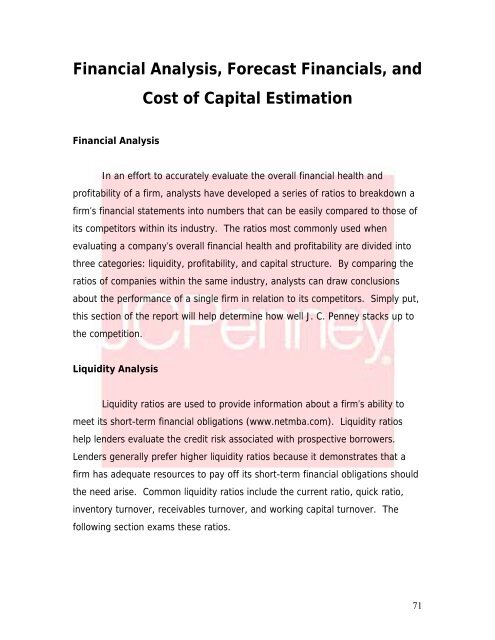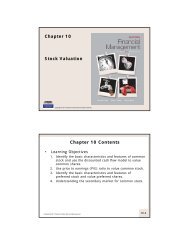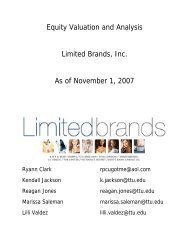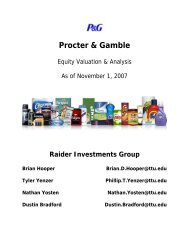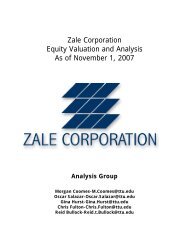J. C. Penney Company, Inc. Equity Valuation and Analysis As of ...
J. C. Penney Company, Inc. Equity Valuation and Analysis As of ...
J. C. Penney Company, Inc. Equity Valuation and Analysis As of ...
You also want an ePaper? Increase the reach of your titles
YUMPU automatically turns print PDFs into web optimized ePapers that Google loves.
Financial <strong>Analysis</strong>, Forecast Financials, <strong>and</strong>Cost <strong>of</strong> Capital EstimationFinancial <strong>Analysis</strong>In an effort to accurately evaluate the overall financial health <strong>and</strong>pr<strong>of</strong>itability <strong>of</strong> a firm, analysts have developed a series <strong>of</strong> ratios to breakdown afirm’s financial statements into numbers that can be easily compared to those <strong>of</strong>its competitors within its industry. The ratios most commonly used whenevaluating a company’s overall financial health <strong>and</strong> pr<strong>of</strong>itability are divided intothree categories: liquidity, pr<strong>of</strong>itability, <strong>and</strong> capital structure. By comparing theratios <strong>of</strong> companies within the same industry, analysts can draw conclusionsabout the performance <strong>of</strong> a single firm in relation to its competitors. Simply put,this section <strong>of</strong> the report will help determine how well J. C. <strong>Penney</strong> stacks up tothe competition.Liquidity <strong>Analysis</strong>Liquidity ratios are used to provide information about a firm’s ability tomeet its short-term financial obligations (www.netmba.com). Liquidity ratioshelp lenders evaluate the credit risk associated with prospective borrowers.Lenders generally prefer higher liquidity ratios because it demonstrates that afirm has adequate resources to pay <strong>of</strong>f its short-term financial obligations shouldthe need arise. Common liquidity ratios include the current ratio, quick ratio,inventory turnover, receivables turnover, <strong>and</strong> working capital turnover. Thefollowing section exams these ratios.71


